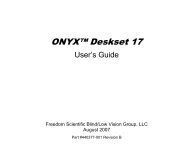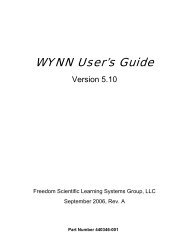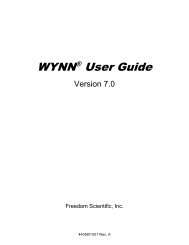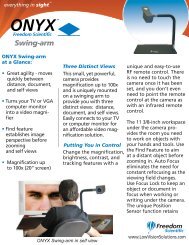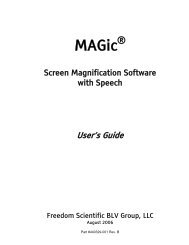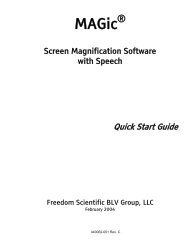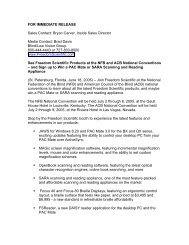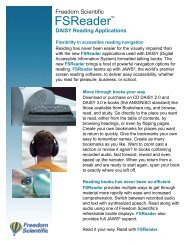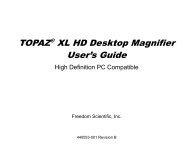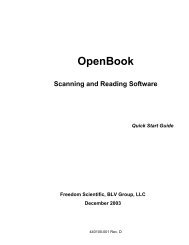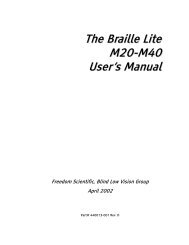The Type Lite User Guide - Freedom Scientific
The Type Lite User Guide - Freedom Scientific
The Type Lite User Guide - Freedom Scientific
You also want an ePaper? Increase the reach of your titles
YUMPU automatically turns print PDFs into web optimized ePapers that Google loves.
62 Part # 440001-001 Rev. B<br />
Macros<br />
Macros<br />
A macro is a set of recorded keyboard commands that<br />
automates a given task. One keyboard command<br />
starts the macro, and the entire series of commands<br />
assigned to it are executed. Using macros can<br />
significantly increase your productivity because it<br />
allows you to automate frequently used tasks. Use<br />
macros for repetitive or complex tasks such as<br />
inserting your name and address into a document,<br />
launching a program, or copying and pasting data<br />
from one file to another.<br />
<strong>The</strong> first time you create a macro, the unit<br />
automatically creates a file called Macros.sys. When<br />
recording macros, keep the following points in mind:<br />
• <strong>The</strong>re is a maximum limit of 64 macros, with<br />
each macro comprising a maximum of 63<br />
keystrokes.<br />
• Carefully plan and record macros to avoid<br />
keystroke errors. (This is very important when<br />
creating a macro that edits text or manipulates<br />
files.)<br />
Recording Recording a a Macro<br />
Macro<br />
To record a macro, start the recording and specify the<br />
key that is used to execute it, then perform the steps<br />
that are to be included in the macro. It is important<br />
to position yourself at the point where you are going<br />
to use the macro you are recording so as to ensure<br />
your key commands are accurate. For example, if you



